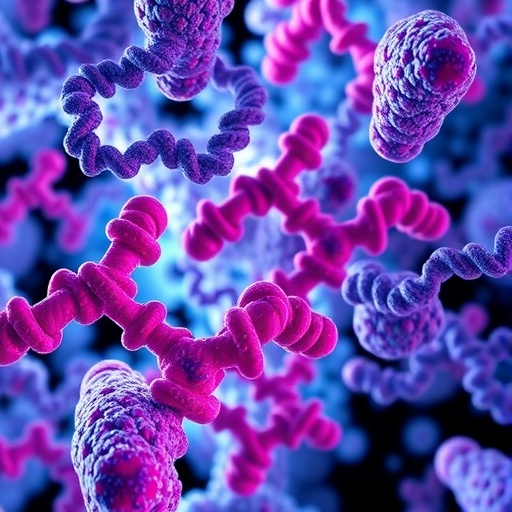Materials science researchers have developed a model that can account for irregularities in how atoms arrange themselves at the so-called "grain boundaries" – the interface where two materials meet. By describing the packing of atoms at these interfaces, the tool can be used to help researchers determine how grain boundaries affect the properties of metal alloys and other materials.
"We've known that these grain boundaries influence material characteristics for many decades," says Srikanth Patala, corresponding author of a paper on the work and an assistant professor of materials science and engineering at NC State University. "But it's been extremely difficult to understand what those defects look like at the atomic level and, therefore, to understand how these structural irregularities affect a material's strength, stiffness, ductility and so on.
"Now we have a tool that lets us see and actually understand what these disordered atomic structures really look like – and that's a big step toward figuring out exactly what's going on," Patala says.
Most materials have a particular atomic structure that is fairly regular. For example, aluminum has a cubic structure, with atoms that line up into long chains of cubes, whereas titanium forms into what are basically stacks of hexagons. But when two materials meet, such as in a metal alloy, these tidy, organized structures clash with each other, creating the disordered grain boundary.
The model developed in Patala's research group finds irregular three-dimensional shapes within the grain boundary, classifies them and then identifies patterns of those irregular shapes.
"Advances in microscopy can help us capture images of how atoms are arranged in a grain boundary, but then we don't really know what we're looking at – you can connect the dots any way you want," Patala says. "Our tool helps to discern patterns of geometric features in an atomic landscape that can appear chaotic.
"Now that these patterns can be identified, the next step is for computational researchers – like me – to work with experimental researchers to determine how those patterns affect a material's properties," Patala says.
Once the effect of the patterns is well understood, that information can be used to better identify the strengths and weaknesses of specific grain boundary types, expediting the development of new alloys or other materials.
The tool, called the Polyhedral Unit Model, can be used to model grain boundaries for any material in which the attraction between atoms is governed solely by the distance between atoms, such as metals and ionic solids – including some ceramics. However, the approach doesn't work for materials, such as carbon, that form so-called directional bonds.
"We are currently working on making the Polyhedral Unit Model publicly available through open source software," Patala says. "We plan to have it out by the end of the year, and hopefully sooner."
###
The paper, "A Three-Dimensional Polyhedral Unit Model for Grain Boundary Structure in fcc Metals," is published in the Nature journal npj Computational Materials. Lead author of the paper is Arash Banadaki, a postdoctoral researcher at NC State. The work was done with support from the National Science Foundation under CAREER award grant DMR-1554270.
Media Contact
Matt Shipman
[email protected]
919-515-6386
@NCStateNews
############
Story Source: Materials provided by Scienmag





